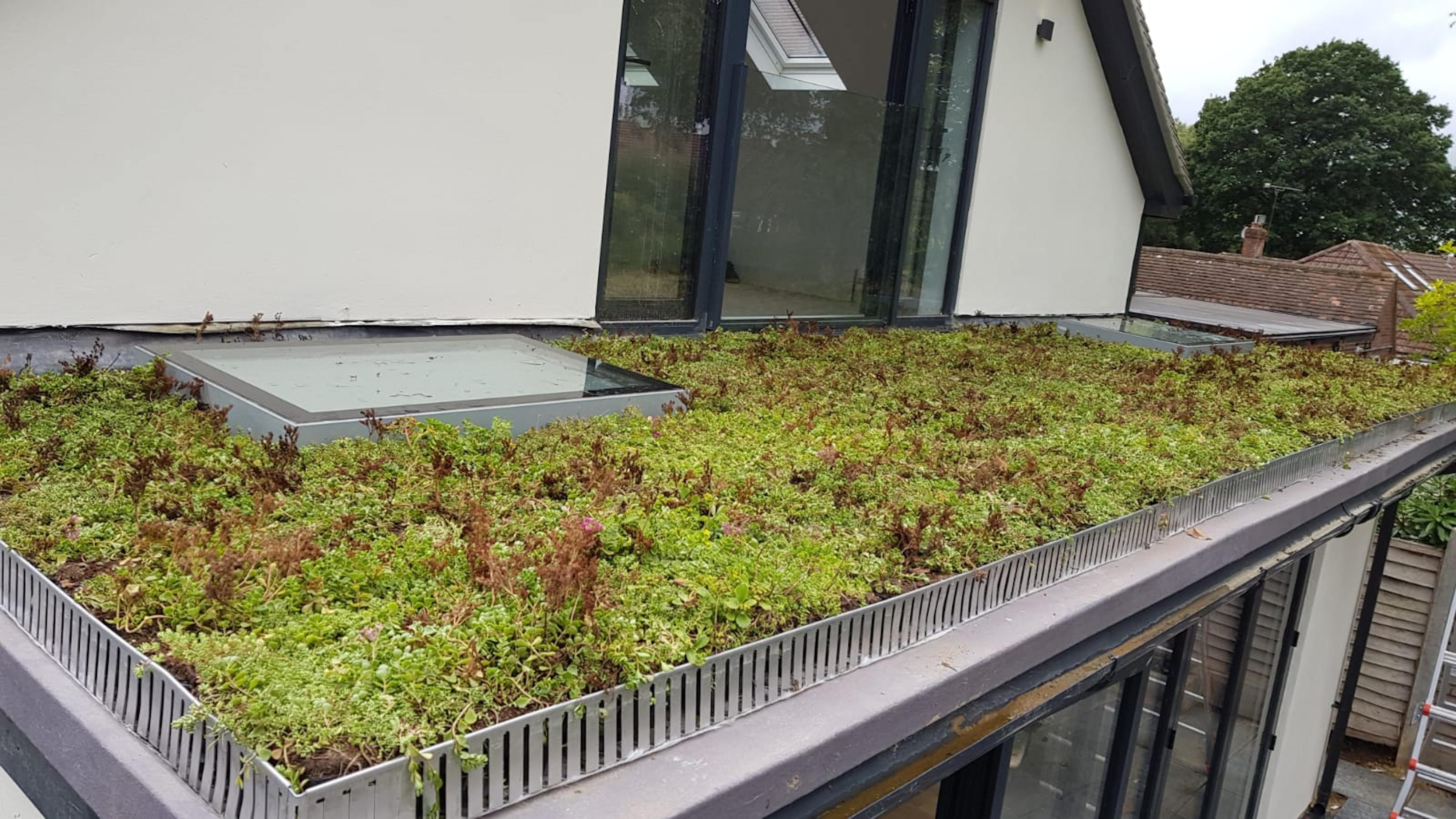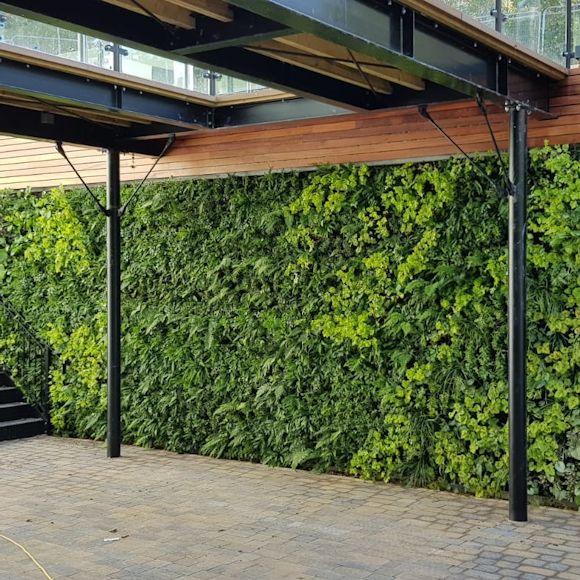Installing a green roof brings an incredibly rewarding addition to your building, but it can be difficult to know where to get important supplies. Sedum is a particularly important feature in green roofs, and you want to select the right option for your building so your green roof can flourish. Viritopia have several excellent green roof options that cater to a variety of eco-systems and are easy to install and maintain. Let us walk you through the benefits of installing a green roof, what you need to look for when making your choice, and why sedum is such an important part of this new addition to your building.
Adding a green roof to your building provides multiple environmental and community benefits that can really make your office or public space a positive feature in the area. There are so many benefits of environmental architecture, from increased productivity and improved health to reduced effects of extreme weather. Green roofs in particular provide a way for a building to be integrated into the local environment through a space that would otherwise go unused.
The first environmental factor that many people will think of when considering a green roof is the absorption of carbon dioxide and the release of oxygen. This exchange will lower your building’s carbon footprint and provide a healthier environment for all its inhabitants. Green roofs don’t just benefit the people in the building, they also provide a rich micro-climate for local wildlife such as birds and insects, with many making their homes in the sedum.
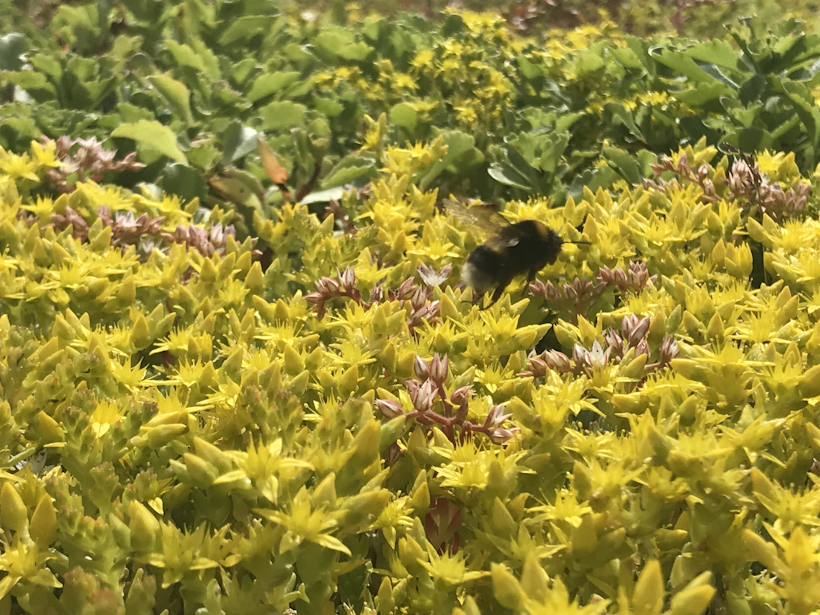
The addition of a green roof can provide a peaceful green space for the people of the building to take a break, something that has proved particularly popular in high-stress atmospheres such as offices and hospitals. A green roof also improves conditions inside the building by providing temperature regulation in both hot and cold weather, and collecting run-off rainwater for eco-friendly use such as flushing the building’s toilets.
The style of green roof you choose to incorporate into your building can depend on your budget, the amount of maintenance you’d like to do, aesthetic preferences, and the size of the building’s roof. There are two main styles of green roof, which are categorised according to the kind of plants they can hold.
These green roofs require a certain amount of soil depth to be planted and need more maintenance than other styles of green roof. Intensive roofs can hold larger plants than other styles, often known as “roof gardens” as they can contain trees and other plants that are usually found in traditional gardens.
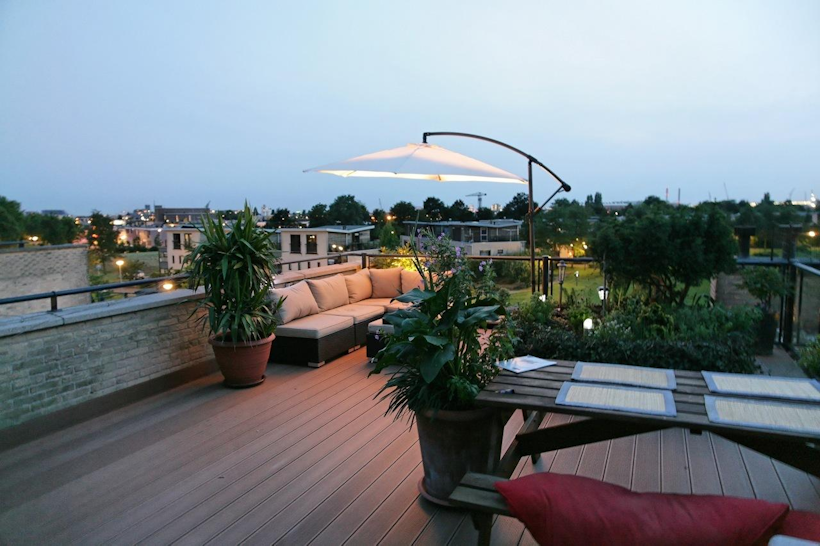
This is the most common kind of green roof as it doesn’t require a deep level of soil for planting. Extensive green roofs use lots of plants like sedum, moss and grasses, as they form a blanket of vegetation that holds together and requires little maintenance.
Extensive green roofs are suitable for a greater variety of environments, are cheaper to install and maintain, and add less weight to a building than an intensive option. Extensive roofs tend to only need feeding once a year when first established, before becoming totally self-sufficient. In contrast, intensive roofs need to be easily accessed so they can be fed, watered, and weeded regularly.
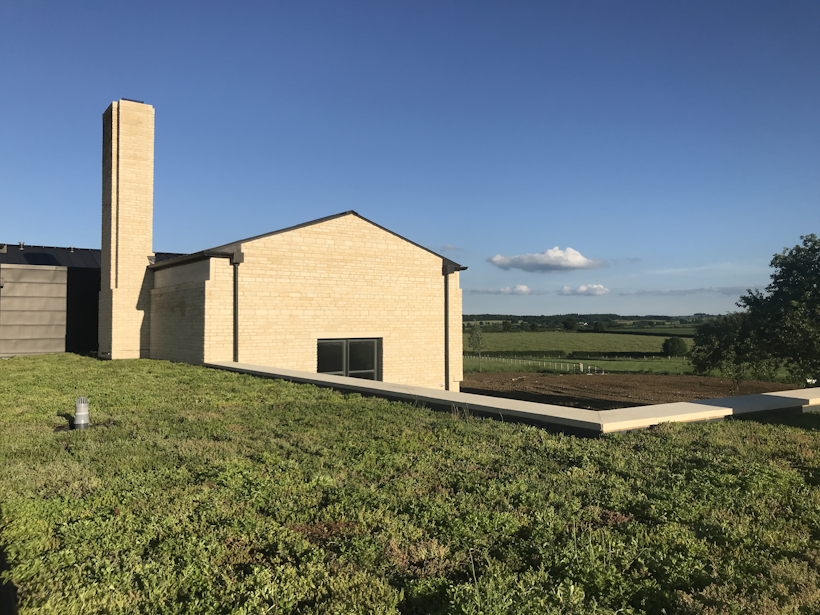
Sedum is such an integral part of green roofs (particularly extensive green roofs) that the term “sedum roof” is often used interchangeably with “green roof”. Sedum (also known as “stonecrop”) is a succulent that grows at a low level and spreads widely, making it the perfect choice to cover a green roof. Sedum is great for absorbing water and carbon dioxide, which is very useful if you’re trying to reduce your office’s carbon footprint. Sedum is also a popular choice in green roofs because of its resistance to tough weather conditions, diseases, and damage from insects.
Viritopia have supplied thousands of green roofs to companies and individuals across the UK, and our products are carefully created to suit your environment and provide a sustainable feature that is beautiful and eco-friendly. We offer three green roof options, and can provide advice as to which style would suit your building best if you require it.
Our green roofs are made using GrufeKit, a unique system of tiles (called GrufeTiles) that can easily be fitted together for quick installation. All of our GrufeKits are made using 100% recycled material (HDPE plastic) and consist of sedum, soil, and a carrier that acts as a water reservoir and drainage layer.
Sedum green roof
The sedum green roof is our most popular GrufeTile option, consisting of between eight and twelve varieties of evergreen sedum so you have a leafy green roof all year round. It is the lightest green roof option, with a saturated weight of 65kg/m ².
Sedum & wildflower green roof
The sedum & wildflower green roof is our most premium option and offers the most impressive appearance through its seasonal bloom. The wildflowers and meadow grasses will provide lots of colour in spring and summer before dying back in autumn, but the incorporation of sedum insures that there will be colour on your green roof throughout the year.
Brown wildflower green roof
The brown wildflower green roof is the lowest-priced option and contains pre-germinated wildflower seeds that bloom in spring and summer, leaving the brown growing media in autumn and winter. Like the sedum & wildflower green roof, it has a saturated weight of 75kh/m².
Adding a green roof to a building brings colour, cleaner air, temperature regulation, and many other positive changes. As tax breaks and financial initiatives for green roofs become more common, the initial cost of a green roof is soon outweighed by the long-term savings. Sedum green roofs are an excellent choice for any roof space as they are light and low-maintenance while still providing many benefits. At Viritopia, our GrufeKit Green Roof System can be tailored to your building’s needs so your roof is transformed by sedum and local flora.
